Step By Step Observations Of A Flatbed Load
Topic 33137 | Page 1
I'm really looking forward to reading this. I'm strongly considering switching to our flatbed division in the near future. I'm curious as to the daily routines, patterns and facets of it. I appreciate you taking the time to do it. I'm wondering if ir would be a good fit for me.
I’m also looking forward to this content. Always interested in learning about what other drivers do within their specialty.
But unlike Davy, I don’t think I could physically do flatbed. Wouldn’t it be difficult to do flatbed with bad knees? Reefer is hard enough.
Reefer:
A refrigerated trailer.
I've been on this account for eight years now. I did take a one year hiatus from driving while dealing with a detached retina in my right eye, so I guess maybe it is more like seven years. We always pick up pre-loaded trailers at the plant I am dedicated to in Delhi, Louisiana. I have never done a live load at this plant in all those years.
Our trailers are backed inside the building in one of 14 bays. Here is a picture of what things look like at the back of the plant. That is my truck backed up to bay 12. That's the bay that my paper work tells me contains my trailer.
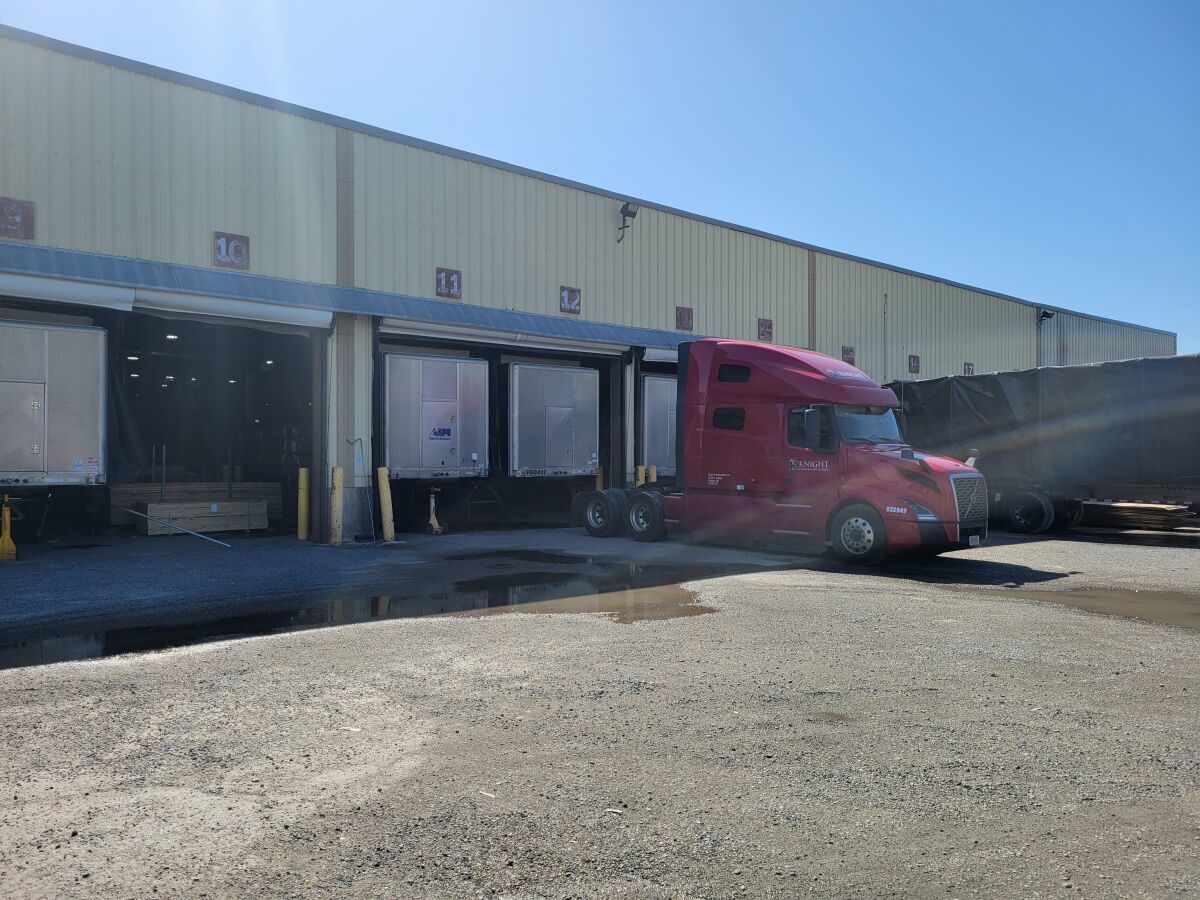
As a truck driver, you eventually learn to double check everything. Details can be critical in this business. We have a file cabinet inside the plant where we pick up our paper work (our BOLs - bills of lading) Mine for today tells me bay 12 and trailer #F50019.
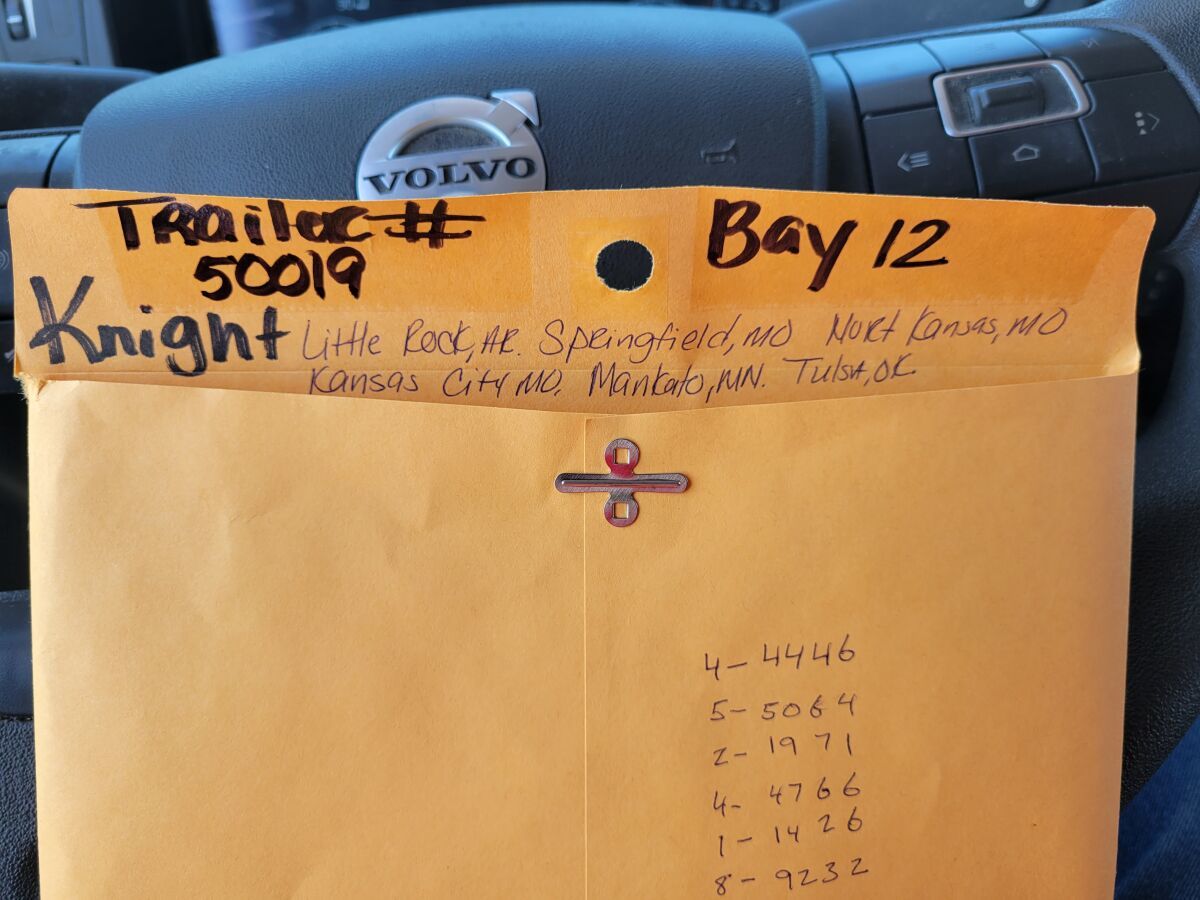
As it turns out that is not the trailer in bay 12. Something is amiss!
I climb all over the load and confirm that it has my material and the proper amount of it loaded. This is something I do on each load I pick up. I have seen and heard of several of our drivers taking off with the wrong load. These guys at the plant sometimes make mistakes. They work hard and fast with lots of interruptions. It is easy to get confused in that type of environment. We are the final eyes on the load before it hits the road. It always pays to double check every detail and make sure it is right before you drive it several hundred miles and then realize you have to go back.
Safety is paramount in this job and this shipper is very strict with their rules. They use all kinds of fall protection and insist we drivers follow their protocol when on site. Here are some shots of the safety netting that is attached to our trailers while they are being loaded and while we are securing the freight for the road.

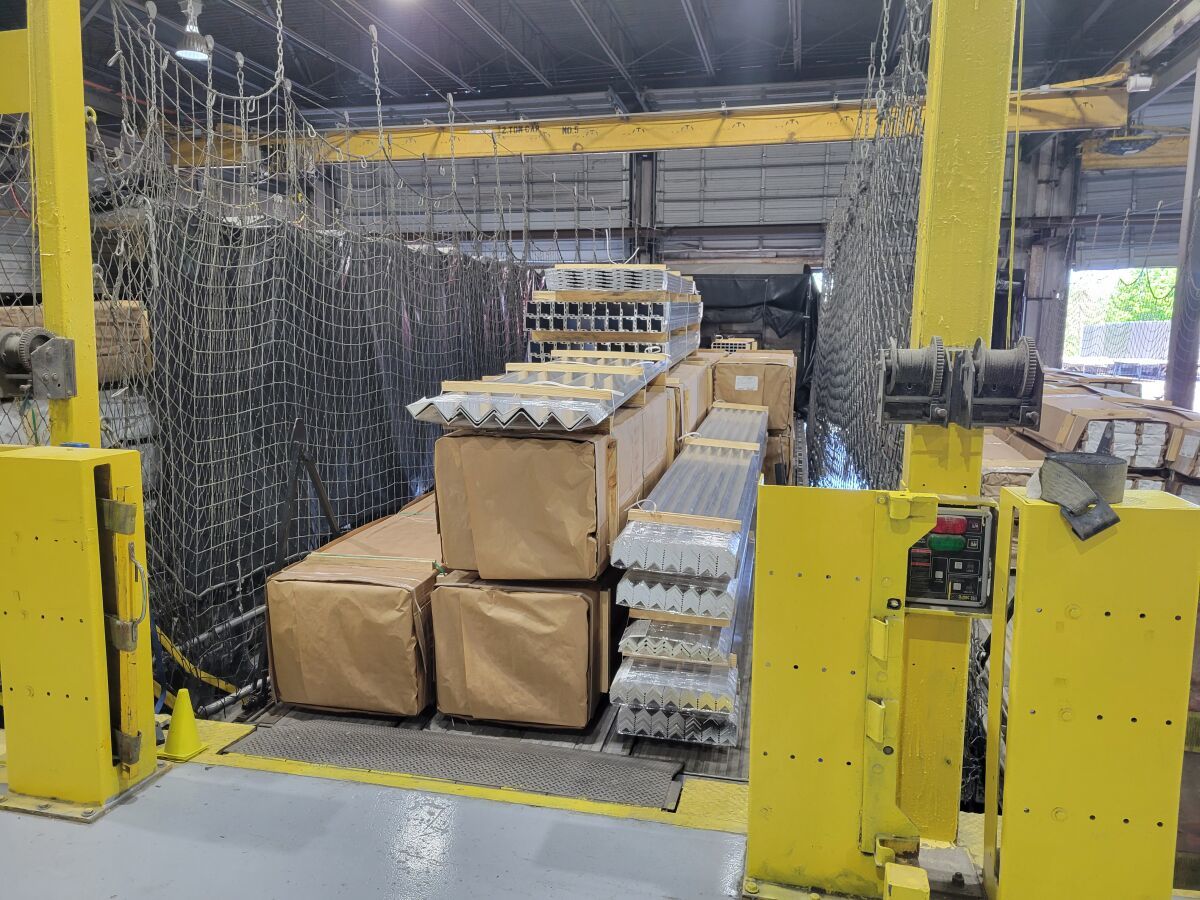
We can climb all over these loads and throw our straps without risk of falling to the pavement. For those of you who are curious... I will admit to being caught by the netting at least once in my tenure here. Somehow I slipped and sure enough the netting caught me like a trapeze artist who was plunging to his death.
Everyone here calls me Mister Dale. I guess it is because I am so much older than everybody else that they feel obligated to throw that "Mister" in there. That day when I got caught by the net, I immediately heard someone cry out, "Mister Dale, are you okay?" Of course a crowd gathered and we all got a good laugh at my expense. The nets can be a pain in the neck at times, but there is a good reason for them to be there. I tease the safety personnel sometimes and say they make it so safe to do this job that it takes all the fun out of it.
We have to close the Conestoga to pull it out of the bay. If you leave it open it is too tall to clear the door and gets torn. After I pull it out I open it back up and tighten all the straps. This gives me another chance to make sure I am ready to roll.
Here's a couple of interesting tips related to this job. Almost all my loads are multi-stop loads. This one has seven stops. One of the things I try to do is to think about how the material will be coming off as the load progresses. I want to try and position my straps so that I don't have to keep repositioning them as the load gets reduced. There is a good example of this on this load.
In this picture you can see some shiny metal on top of the load. That comes off at one customer, while the other metal below it (wrapped in cardboard) comes off at a later stop. Those cardboard wrapped ones need to have two straps on each section to be secured properly. I positioned my straps so they secure the top properly and will still be securing the lower section properly once the top part is removed. This allows me to work faster at each location without having to move winches around each time I remove material from the total load.
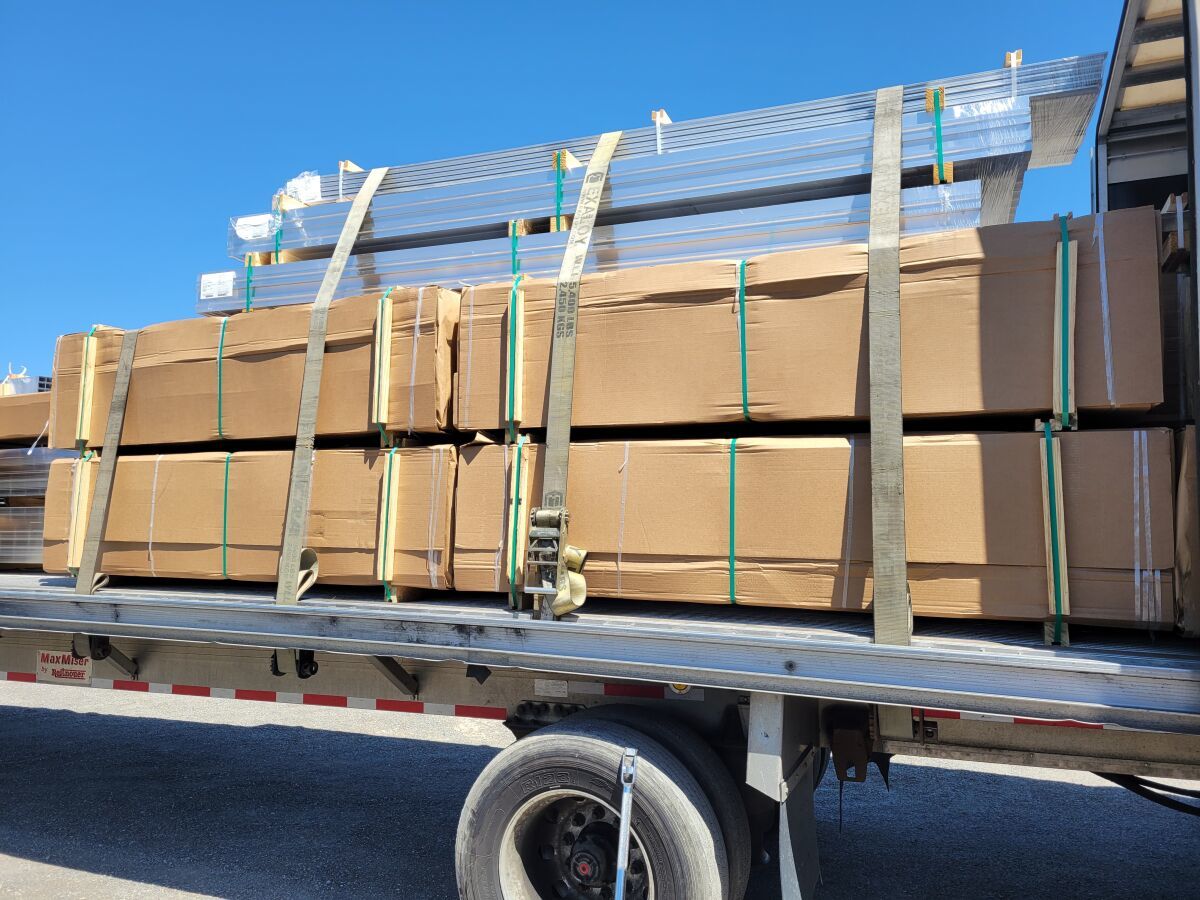
To arrange those straps properly I needed one winch to be placed directly above one of my trailer tires. This is not a good practice so I had to use a hand winch in that position rather than one of the trailer mounted winches. That tire can move up and down on these rough roads we travel. That can cause some havoc and possibly blow a tire or tear a strap completely loose from the load. None of that is desirable so we have to come up with solutions.
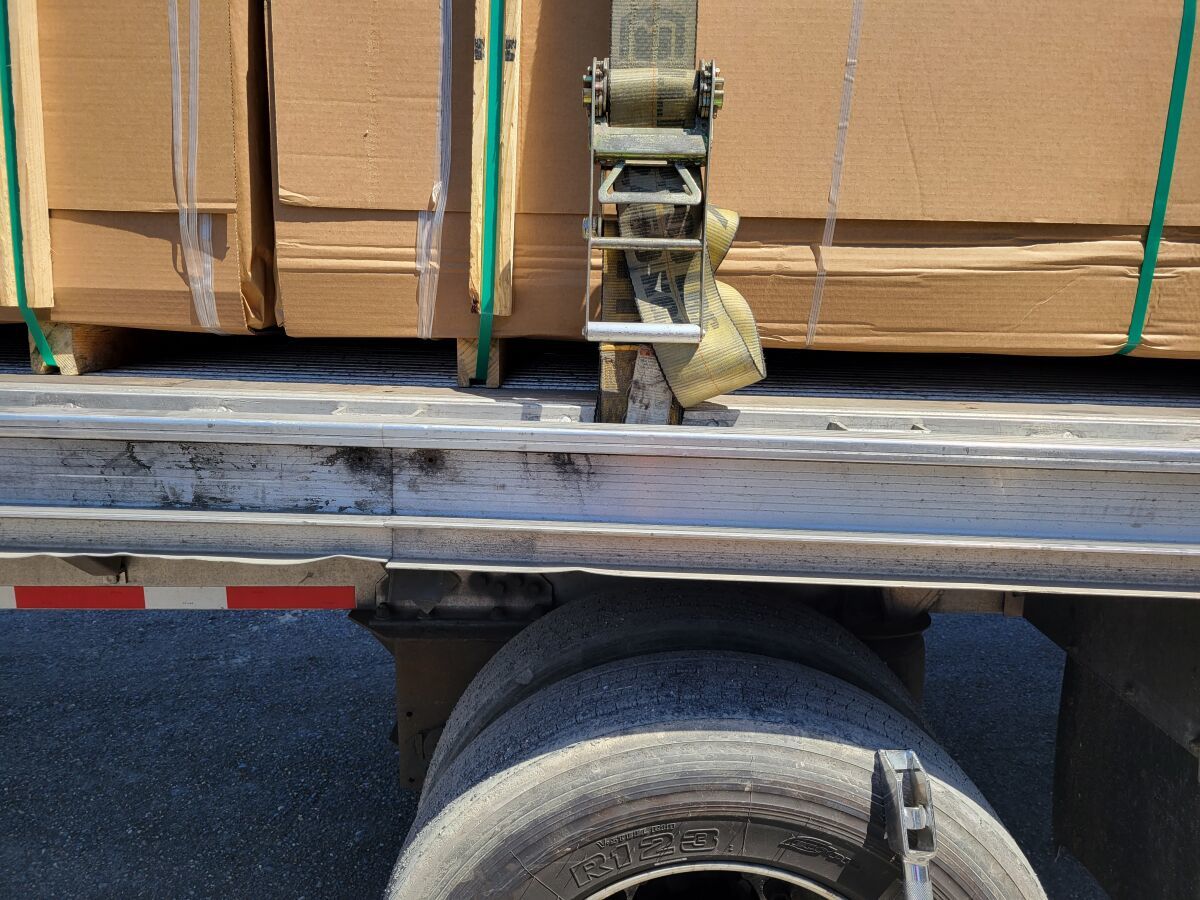
I drove on up to Little Rock, AR today. That is my first stop tomorrow. I have an appointment for 0900, and then I need to get on up to Springfield, MO for my second stop.
This load has a little more than 1,600 miles on it. I hope you enjoy coming along with me.
Shipper:
The customer who is shipping the freight. This is where the driver will pick up a load and then deliver it to the receiver or consignee.
Dm:
Dispatcher, Fleet Manager, Driver Manager
The primary person a driver communicates with at his/her company. A dispatcher can play many roles, depending on the company's structure. Dispatchers may assign freight, file requests for home time, relay messages between the driver and management, inform customer service of any delays, change appointment times, and report information to the load planners.HOS:
Hours Of Service
HOS refers to the logbook hours of service regulations.OOS:
When a violation by either a driver or company is confirmed, an out-of-service order removes either the driver or the vehicle from the roadway until the violation is corrected.
Great stuff, OS!
You are a skilled writer.
This is and I'm sure will continue to be an excellent read. Though I don't foresee ever pulling a flatbed, I'm very interested to read how a top tier driver does it.
Are your multi-stop loads loaded so that the first stop's load comes off the top and so on, to help keep weight distribution even, versus a dry van with multi-stop loads obviously coming off rear of trailer first? I've only had three multi-stop loads as a rookie dry van hauler, all to USPS facilities.
Dry Van:
A trailer or truck that that requires no special attention, such as refrigeration, that hauls regular palletted, boxed, or floor-loaded freight. The most common type of trailer in trucking.I've got a terrible internet connection tonight. I am going to have to try and update this tomorrow. Sorry about the delay. I delivered two stops today. One was in Little Rock, AR (Ryerson Metals), and the other was in Springfield, MO. Now I am set up in KC for three stops here.
I'm sorry about the glitch we had the other day. I couldn't get photos to load no matter how I tried.
Before we start looking into what I've been doing with this load let's address a few other things. Remember how I showed you the hand winch I used? That is a solution for the problem of needing a winch placed just above a trailer tire. I took a photo of a tire on this trailer that was damaged from a winch. Here's the tire I found while pre-tripping this pre-loaded trailer.
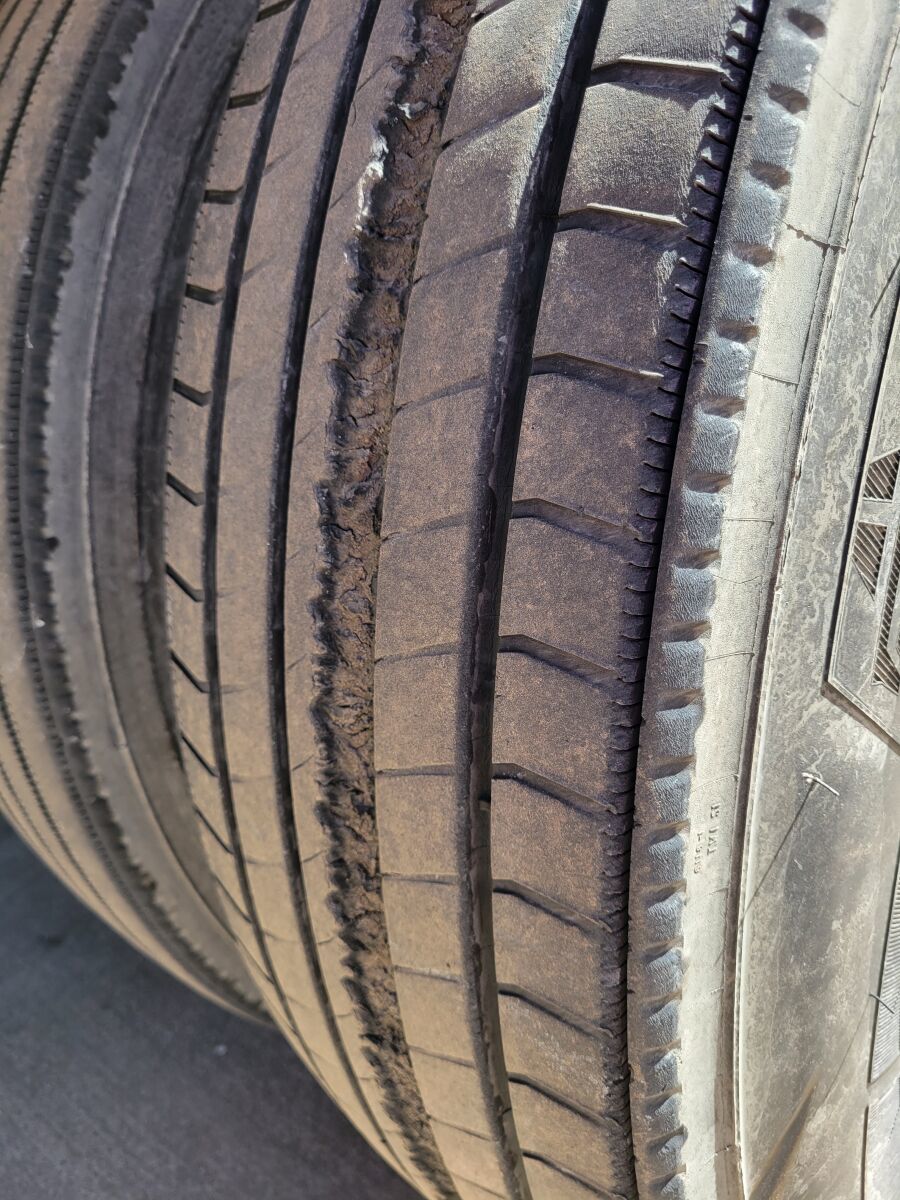
You can see in that photo why it is never a good idea to place a winch above your tire when securing a flatbed load. Truck drivers need to think about the consequences of their actions. Sometimes we can prevent our own problems and delays by practicing our own preventive actions and behaviors. I've seen winch damaged tires much worse than this one.
Speaking of that... while looking at that set of materials where I used the hand winch, an experienced flatbedder may notice a mistake. I need a "belly strap" on the lower two cardboard bound bundles. Once you are two sections high with bundled materials like this, you need to have a strap securing the lower bundles. That is part of the securement regulations in the green book. I realized my mistake and fixed it on my first load check.
If you remember, I had driven to Little Rock because I had an appointment for an 0900 delivery at Ryerson Metals. This company always requires an appointment, and 0900 is their first time slot for the day. I parked at a small truck stop right there at the Port of Little Rock. This put me right across the street from Ryerson. I slept there and eased over into The staging area at about 0800 to check in and get my straps loosened up and ready for action. I was hoping they might let me in a little early because it was still a long drive to my next stop in Springield, MO Which stops receiving at 1500.
Fortunately my strategy paid off because they came and told me to pull into Bay 1 at about twenty minutes before my appointment time. This allowed me to get out of there by about 0915, which then helped me get to Springfield by 1400. Whew - that worked great! Anytime you can push things forward timewise in a truck will generally be beneficial.
We all know that flatbedders can't back a truck, therefore many of our customers are set up so we pull into their buildings.  Here I am inside the building getting unloaded.
Here I am inside the building getting unloaded.
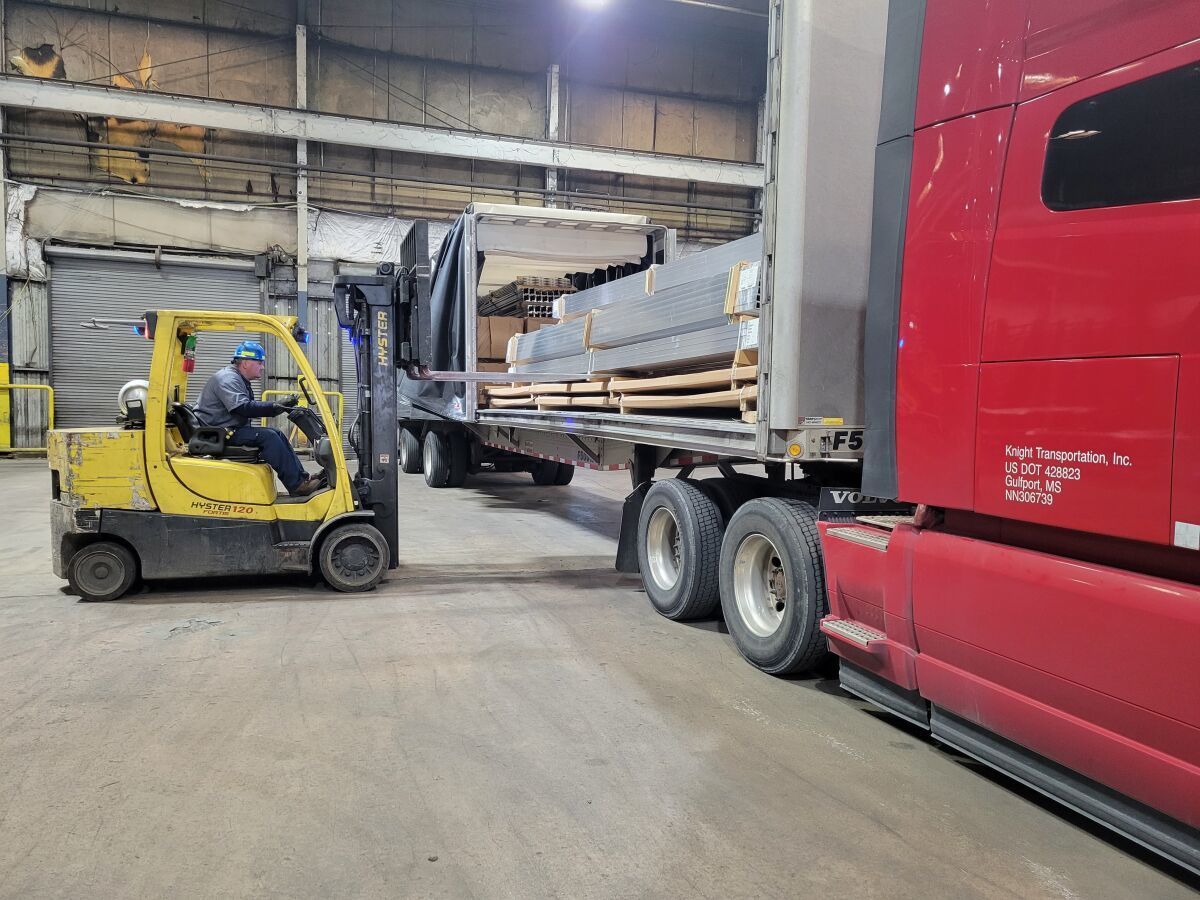
You may notice in that photo that I am having materials removed from the front/right of the trailer. Sandman asked a great question about removal and weight distribution. I am hauling linear shapes which vary in length and shape. It is impossible to load them perfectly each time so they can be removed efficiently for weight distribution. At my next stop in Springfield, MO, they unloaded their materials from the rear/right section of the trailer. Here we are outside in the beautiful springtime weather offloading with a forklift.
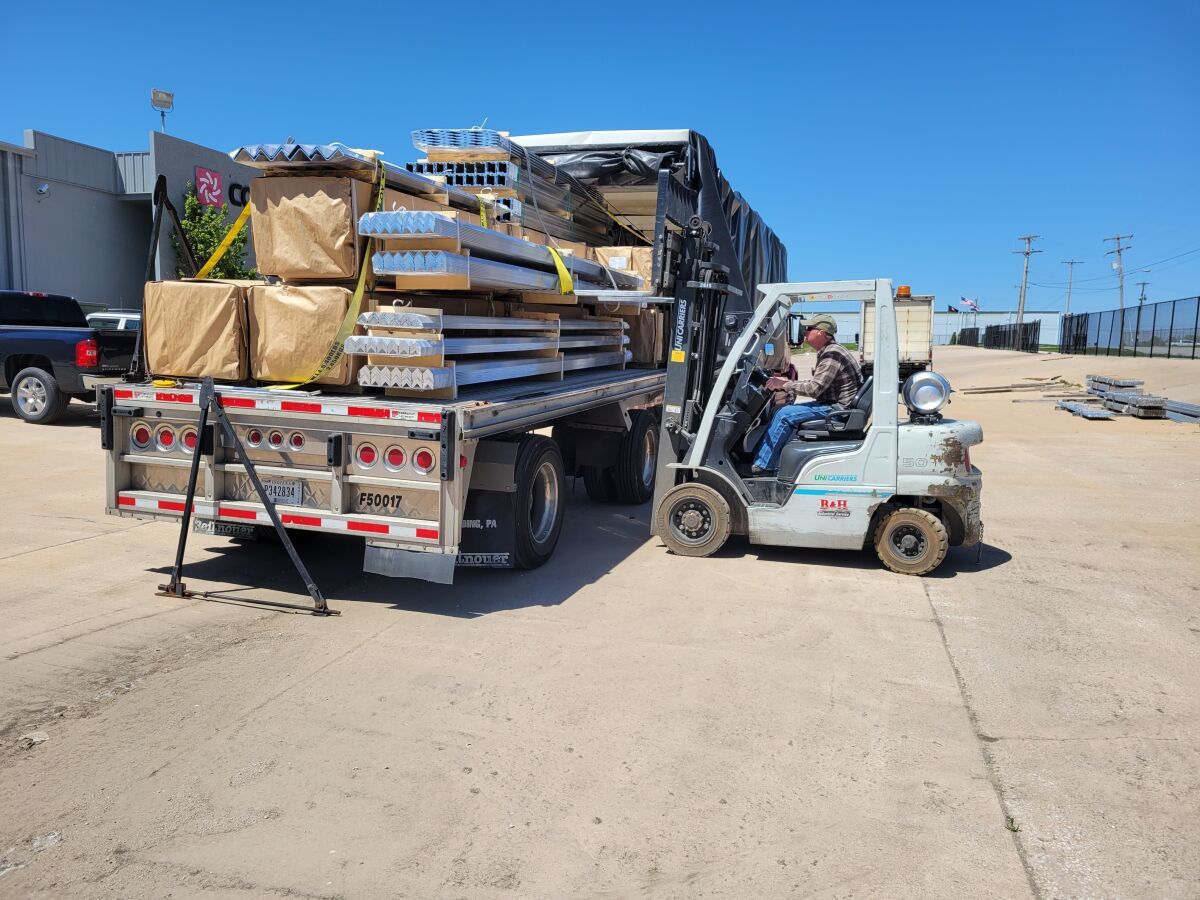
At the end of that first day of doing two stops we have removed over 10,000 pounds from the right side of the trailer. Somedays are worse than that. It's all just part of this job. I almost always do multi-stop loads on this dedicated account. Our customer sells their product at a delivered price, and they depend on us to get the job done. Some loads are easier than others and you almost depend on the luck of the draw to determine how easy or difficult your day may be.
Speaking of issues with multi-stop loads... here's something that makes them tricky. The more customers you have together in a load, the more likely you are to have some who require appointments and some who don't. Then you also have varying distances between the stops that add to the challenge of not wasting time sitting and waiting.
After Springfield, MO my next stop is in Kansas City. I drove up there after unloading in MO and parked at one of our terminals. That helped me know I would have available parking. That is one of the many benefits of working at a large company. When going into big cities I am likely to find a Knight or Swift terminal I can park at. This helps greatly with trip planning. No truck driver enjoys going into a big city late in the day and trying to count on parking being readily available.
Tonight I am parked in Mankato, MN. I had three stops in Kansas City. The final one had a 1000 appointment at another Ryerson location. I got my first two stops off and managed to get to Ryerson about an hour early. That didn't seem to bother them and they got me right in and out. That leaves me with two more stops: Mankato, MN and Tulsa, OK. Yeah, that's weird! I should have delivered to Tulsa on the way up here. Because we deal with linear shapes and stacking them so they will not shift, Tulsa's material needs to be on the bottom since they are nice square bundles. That makes them good candidates for stacking something not so stable on top. That kind of thing can determine the order of the stops.
I'll jump in here later with an update when I can.
Terminal:
A facility where trucking companies operate out of, or their "home base" if you will. A lot of major companies have multiple terminals around the country which usually consist of the main office building, a drop lot for trailers, and sometimes a repair shop and wash facilities.
Dm:
Dispatcher, Fleet Manager, Driver Manager
The primary person a driver communicates with at his/her company. A dispatcher can play many roles, depending on the company's structure. Dispatchers may assign freight, file requests for home time, relay messages between the driver and management, inform customer service of any delays, change appointment times, and report information to the load planners.OOS:
When a violation by either a driver or company is confirmed, an out-of-service order removes either the driver or the vehicle from the roadway until the violation is corrected.
Wouldn’t it be difficult to do flatbed with bad knees?
BK, I think it would. I still do a good bit of climbing on my loads. Especially when it is a regular flatbed load that needs to be tarped. If your knees are really bad, I would stick with reefer or dryvan.
Dryvan:
A trailer or truck that that requires no special attention, such as refrigeration, that hauls regular palletted, boxed, or floor-loaded freight. The most common type of trailer in trucking.Reefer:
A refrigerated trailer.
OS, I have a question related to what Sandman asked.
As you get unloaded, do you ever have to re-arrange the remaining materials? I would think that would be difficult since the forklift operator would have to do that after removing the current stop materials.
Dm:
Dispatcher, Fleet Manager, Driver Manager
The primary person a driver communicates with at his/her company. A dispatcher can play many roles, depending on the company's structure. Dispatchers may assign freight, file requests for home time, relay messages between the driver and management, inform customer service of any delays, change appointment times, and report information to the load planners.New Reply:
New! Check out our help videos for a better understanding of our forum features

















Preview:








 TT On Facebook
TT On Facebook
I'm going to share my load with you all this week. I've done this in the past when I had my daughters riding along. It's kind of fun, and I hope it's educational.
I emptied out my backhaul load at the Hydro plant in Delhi just now and they have a pre-loaded trailer waiting on me. That's the beauty of this dedicated account. I'll jump back in either tonight or tomorrow to update you with photos and information regarding my job functions and my journey.
I hope newcomers will enjoy this and participate with comments or questions. I want it to be informative and entertaining. I also welcome comments and or critique from the longstanding members here. I am certainly not a man with all the answers. I hope everyone will feel free to jump in and help me be as informative as possible.